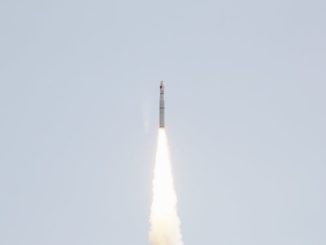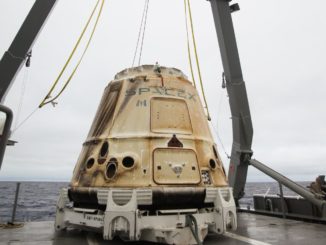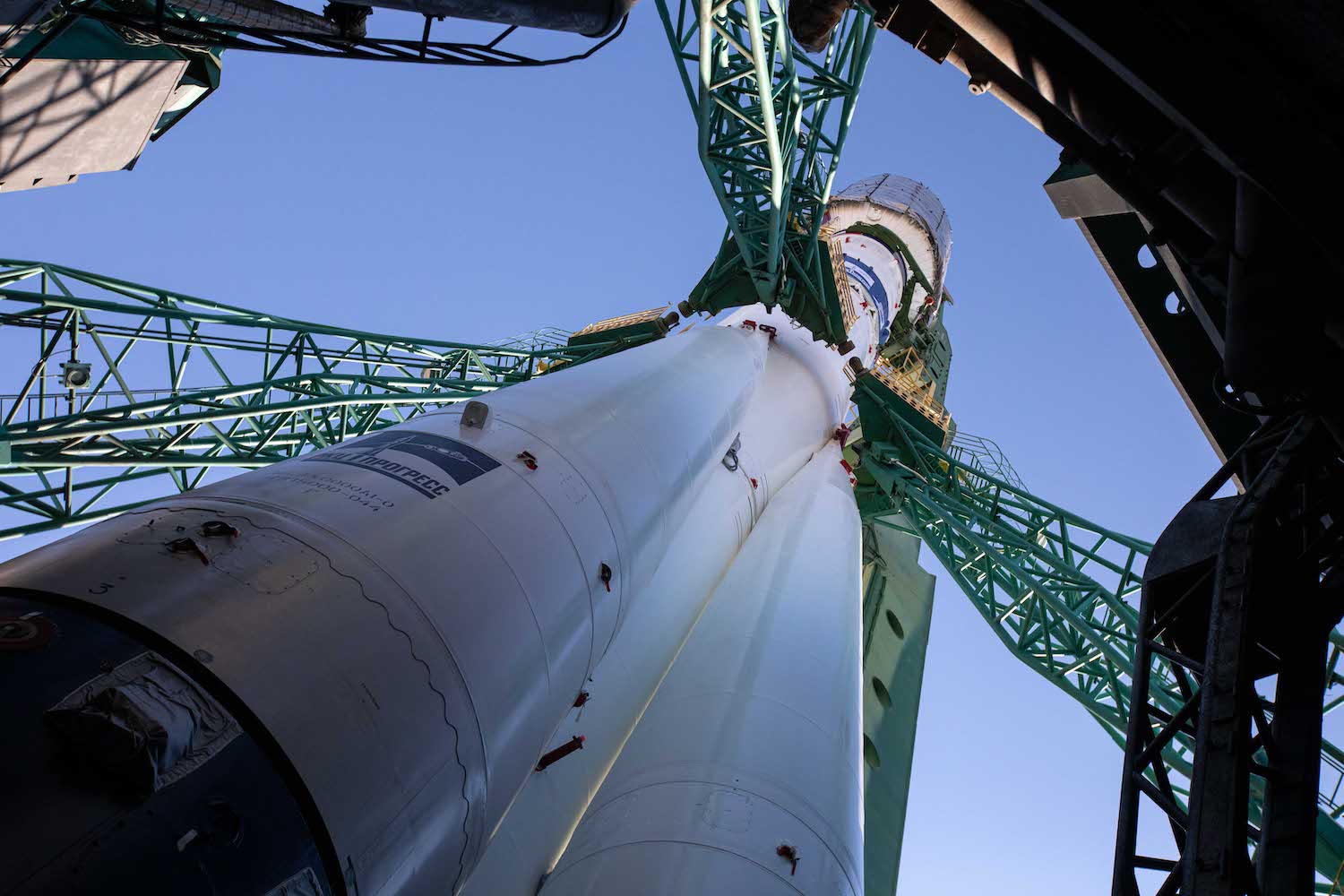
Sporting a new blue and white paint scheme to mark the upcoming 60th anniversary of the first human spaceflight, a Russian Soyuz rocket loaded with 38 international satellites has rolled out to its launch pad at the Baikonur Cosmodrome in Kazakhstan ahead of a planned liftoff Saturday.
The Soyuz-2.1a rocket rode a specialized rail car pulled behind a train engine Thursday for the trip from its assembly building to the launch pad at Site 31 at Baikonur. After the Soyuz arrived at the pad, a hydraulic lift raised the 15-story launcher upright and gantry arms closed around the rocket.
Ground crews at Baikonur planned final inspections, closeouts, and configuration of the rocket’s booster ignition system ahead of liftoff Saturday. A launch rehearsal was also on tap Thursday.
Rather than its usual dark green, gray, and orange livery, the Soyuz-2.1a rocket set for launch Saturday has a new look.
Roscosmos, Russia’s space agency, said the new blue and white color scheme is a “tribute” to the Vostok rocket, which carried cosmonaut Yuri Gagarin into orbit April 12, 1961, on the first human voyage into space.
The usual gray contours are painted blue on the Soyuz-2.1a rocket flying Saturday. Blue is the corporate color of GK Launch Services, a commercial division of Glavkosmos, which is a subsidiary of Roscosmos. The Russian space agency said other commercial Soyuz missions planned by GK Launch Services this year will bear the same blue and white colors.
GK Launch Services has arranged launches for small satellites on Soyuz missions carrying Russian government satellites into orbit. But the launch Saturday is the first all-commercial mission managed by the company.
“This is an event of paramount importance for us,” said Evgeny Solodovnikov, sales director at GK Launch Services. “We’re offering the first truly commercial mission entirely operated by our company, GK Launch Services..”
Liftoff of the Soyuz-2.1a rocket with its 38 payloads is scheduled for 2:07 a.m. EDT (0607 GMT; 11:07 a.m. Baikonur time) Saturday.
“We will be launching a group of satellites from 18 countries, and this is a record for (the number of) nations within one mission,” Solodovnikov said.
The 38 satellites come from customers in Argentina, Brazil, Canada, Germany, Hungary, Israel, Italy, Japan, the Netherlands, Russia, Saudi Arabia, Slovakia, South Korea, Spain, Thailand, Tunisia, the United Arab Emirates, and the United Kingdom.
The Soyuz rocket’s kerosene-fueled engines will send the 38 satellites and a Fregat upper stage into space, reaching a speed just shy of the velocity required to enter a stable orbit around Earth less than nine minutes after launch.
The rocket’s four liquid-fueled boosters will shut down and separate about two minutes after liftoff as the Soyuz heads north from Baikonur. The Soyuz core stage will fire for nearly five minutes, then jettison as the third stage ignites for its four-minute burn.
The Fregat space tug’s main engine, burning storable hydrazine fuel, will fire several times to inject the mission’s 38 satellite payloads into three different orbits flying that will take the spacecraft over Earth’s poles on each lap around the planet.
After the first two Fregat burns, the upper stage will deploy South Korea’s CAS500 1 Earth observation satellite at 3:10 a.m. EDT (0710 GMT).
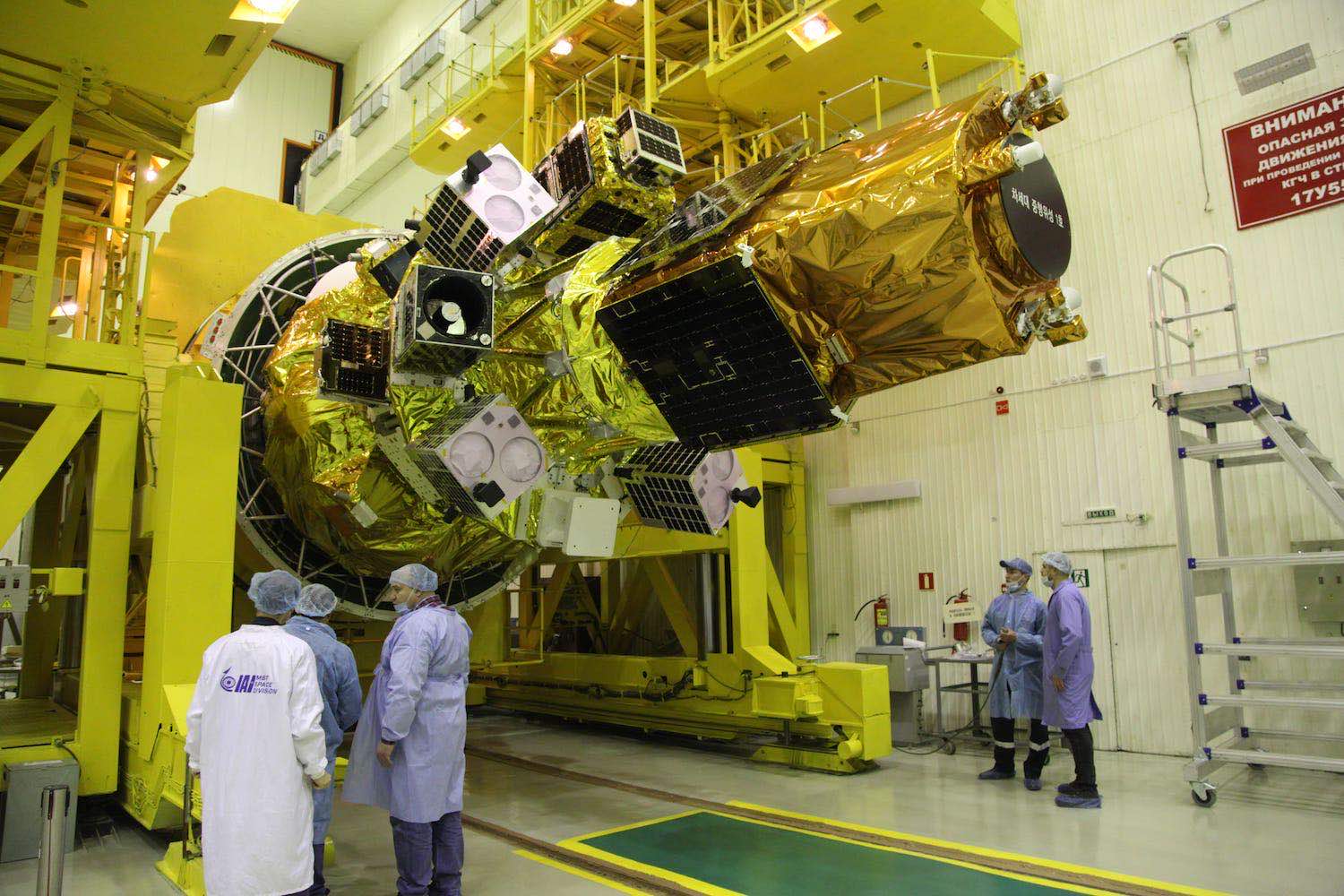
The CAS500 1 spacecraft was developed by the Korea Aerospace Research Institute — South Korea’s space agency — and is the largest satellite awaiting launch on Saturday’s mission. With a weight of about 1,100 pounds, or 500 kilograms, the CAS 500 1 spacecraft has an optical camera designed to capture images with a resolution as good as 19.6 inches, 50 centimeters.
CAS stands for Compact Advanced Satellite.
According to KARI, CAS500 1 is the first satellite in a fleet of multiple Earth-imaging observatories planned in the next few years. The South Korean government led development of the CAS500 1 spacecraft, and KARI plans to transfer the technology to South Korean industry to lead the construction of a second satellite named CAS500 2.
In a future phase of the CAS500 program, South Korea plans to develop three satellites to observe agricultural and forest conditions, track water resources, and aid in disaster response efforts.
Additional burns by the Fregat upper stage will release the other 37 satellites at different altitudes. All three sun-synchronous orbits targeted by Saturday’s Soyuz mission will be between about 310 miles and 341 miles (500 to 550 kilometers) in altitude.
The second group of payloads will deploy from the Fregat upper stage beginning around 4:35 a.m. EDT (0835 GMT), and the final payloads are scheduled to separate from the rocket between 6:13 a.m. and 6:43 a.m. EDT (1013-1043 GMT), according to Roscosmos.
“We will be doing three orbits, and separating multiple satellites,” Solodovnikov said last month at the 2021 SmallSat Symposium. “The orbits will be at different altitudes. From a technical standpoint, it’s a very challenging, and at the same thrillingly exciting mission.”
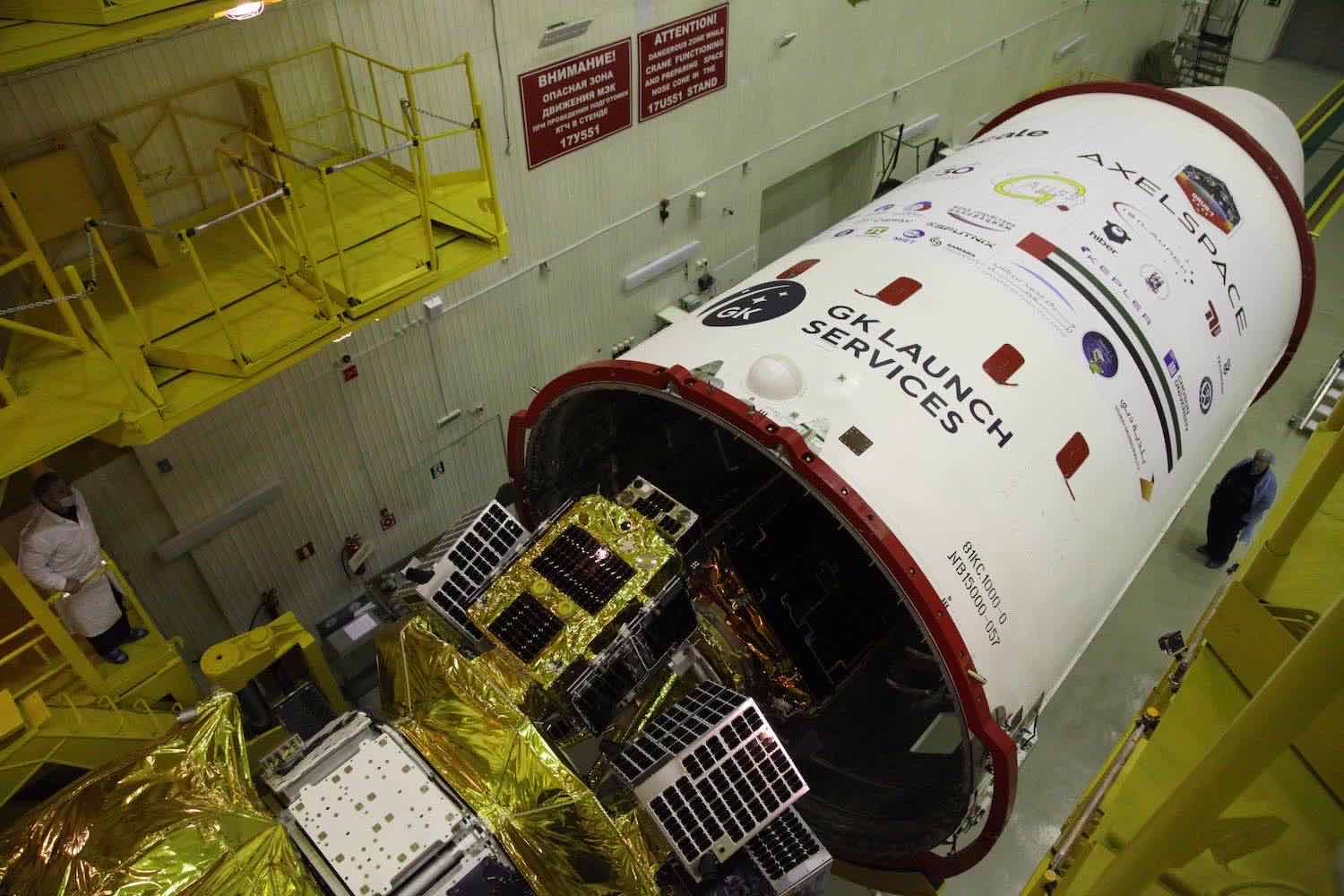
In addition to South Korea’s CAS500 1 spacecraft, the Soyuz rocket will launch a cluster of smaller satellites designed for technology demonstrations, telecommunications, Earth observation, solar research, radiation monitoring, astronomy, and education missions.
One of the payloads, named ELSA-d, will demonstrate sensors and techniques that could be used on future missions to clear space junk out of busy orbital traffic lanes. Developed by Astroscale, a company headquartered in Tokyo, the ELSA-d mission includes two small satellites that will separate from each other in orbit.
The larger of the two ELSA-d satellites, designated the “Servicer” spacecraft, will approach the smaller “Client” satellite using on-board navigation aids. The two satellites will dock and undock several times over the course of the six-month demonstration mission, simulating an approach to a stable piece of space junk and then practicing for a docking with a tumbling object in orbit.
ELSA-d, which stands for End-of-Life Services by Astroscale-demonstration, is the first commercial mission to demonstrate technologies to remove space junk from orbit. The satellites have a combined mass of about 423 pounds, or 192 kilograms, and were built by Astroscale in Japan and by Surrey Satellite Technology Ltd. in the United Kingdom.
Astroscale employees in Hartwell, England, will oversee ELSA-d’s operations after launch. The UK Space Agency licensed the first-of-its-kind mission.
The company hopes to provide debris removal services for government and commercial satellite operators after proving out its technology with the ELSA-d mission.
Other payloads on-board the Soyuz-2.1a rocket include four GRUS Earth observation satellites, each about 200 pounds (about 80 kilograms) in mass, from the Japanese company Axelspace. The four GRUS satellites carry optical imagers, and will join Axelspace’s first commercial GRUS microsatellite already in orbit.
In a press release, Axelspace called the four new GRUS spacecraft “Japan’s first mass-produced satellites.” They will be capable of imaging at a resolution of about 8.2 feet, or 2.5 meters. With five GRUS satellites, Axelspace’s constellation will be able to revisit the same part of Earth in less than three days.
Three small 17-pound (8-kilogram) satellites from Technion, or Israel Institute of Technology, will fly in formation as they orbit Earth. Their mission, known as Adelis-Samson, will be to prove out sensor technology to detect signals from people, planes, and ships.
The three satellites will triangulate the location of the source of the radio signals.
“This is a leap in the field of miniature satellites, in the capabilities of the Technion, and for the entire State of Israel, and one which will make the Technion a global pioneer in the fields of geolocation and satellite communication, with diverse applications including search and rescue, remote sensing, and environmental monitoring,” said Pini Gurfil, leader of the Adelis-Samson project.
Two commercial data relay CubeSats from the Canadian company Kepler Communications are also awaiting launch Saturday.
There’s also a CubeSat named Hiber 3 for a Dutch company developing its own data relay constellation, and two nanosatellites for the Spanish company Sateliot and the UK company Lacuna Space for similar purposes.
The NAJM 1 spacecraft from Saudi Arabia is a small satellite pathfinder for Earth observation and communications in low Earth orbit, and the 33-pound (15-kilogram) DMSAT 1 microsatellite from Mohammed Bin Rashid Space Center in Dubai will monitor greenhouse gases over the United Arab Emirates.
A CubeSat named NanoSatC-BR2 from Brazil will collect data on Earth’s magnetic field and ionosphere, and a South Korean CubeSat named KMSL will perform a fire experiment in low Earth orbit.
Four tiny satellites from the Technical University of Berlin, numbered Beesat 5 through 8, are also launching Saturday.
The four Beesats weigh about 375 grams (0.82 pounds) each, and will conduct experiments with a UHF communications system for inter-satellite radio links and a satellite navigation receiver, a stepping stone toward more capable swarms of tiny satellites that can work together in orbit.
Two formation-flying South Korean CubeSats named Pumbaa and Timon will attempt to make observations of the solar corona. The satellites will fly at just right distance from each other to allow one of the CubeSats to cover the disk of the sun, revealing the sun’s corona, or atmosphere, to a sensor on the other CubeSat.
The Italian-built Unisat 7 spacecraft serves as both a space tug and an orbital experiment platform. The 70-pound (32-kilogram) spacecraft was built by a company named GAUSS, a spinoff founded by engineers at Sapienza University of Rome.
Unisat 7 will release six smaller educational and scientific research satellites from builders in Argentina, Germany, Hungary, Italy, and Thailand, the continue on to perform its own mission performing experiments in astrodynamics, communications, optics, attitude control, and space debris detection. Unisat 7 also hosts an amateur radio payload.
Tunisia’s first satellite, a CubeSat named Challenge One, is also aboard the Soyuz rocket. There’s also a small spacecraft named KSU-CubeSat developed by students at King Saud University in Saudi Arabia.
A Slovakian spacecraft from the University of Košice known as GRBAlpha will demonstrate detector technology and electronics for a planned constellation of nanosatellites designed to study sources of gamma ray bursts, powerful explosions in the distant universe that astronomers believe are caused by the collapse of matter into black holes.
The SIMBA CubeSat, developed at Sapienza University of Rome, will help scientists track the migration of animals across national parks in Kenya. A range of animals, from birds to large mammals, will be fitted with sensors to monitor their movement via satellite.
Three additional CubeSats — ranging in size from a toaster oven to a briefcase — were developed by research institutes, students, and companies in Russia.
Photos of the Soyuz rocket’s rollout to the launch pad at Baikonur are posted below.
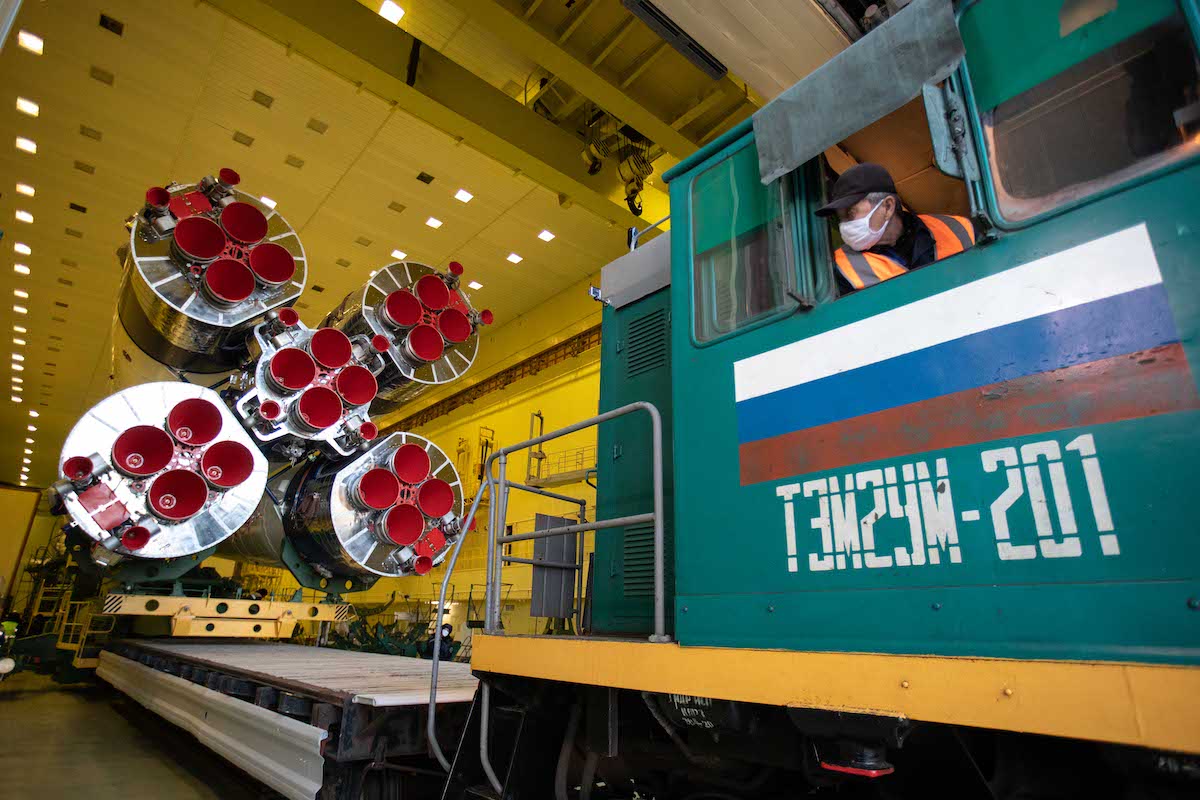
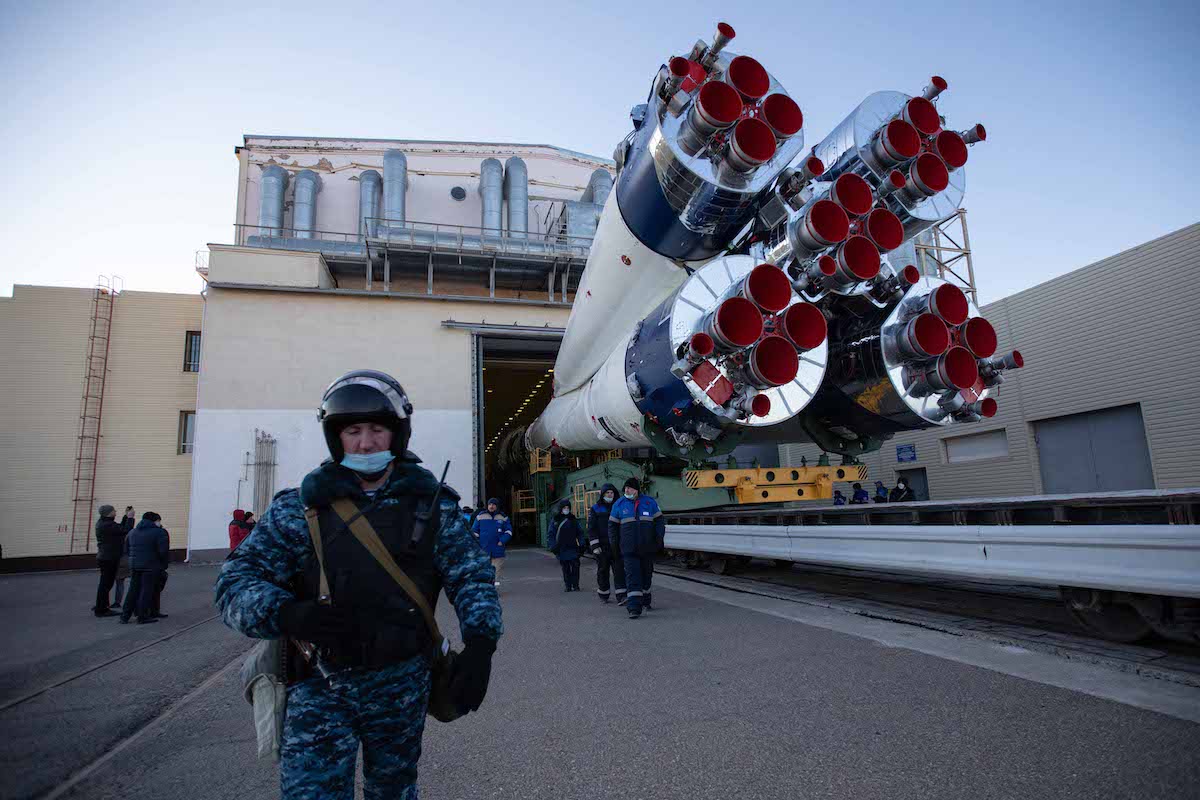
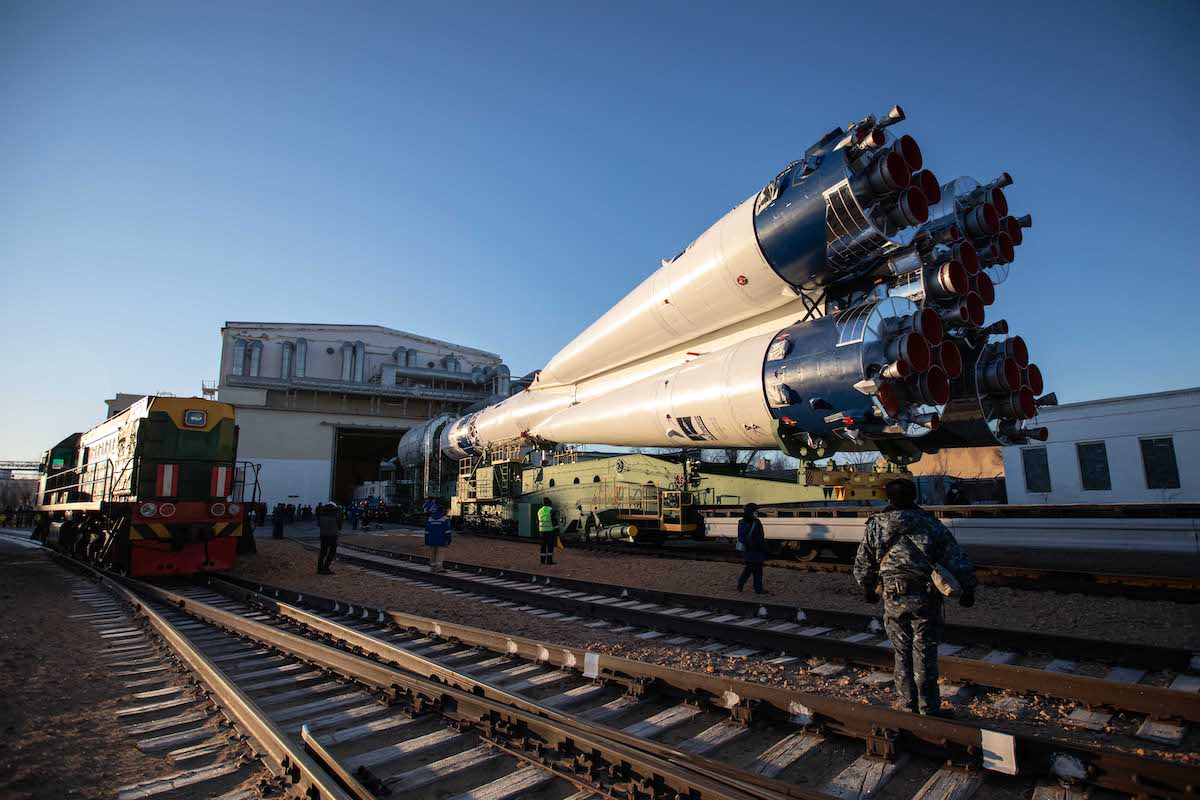
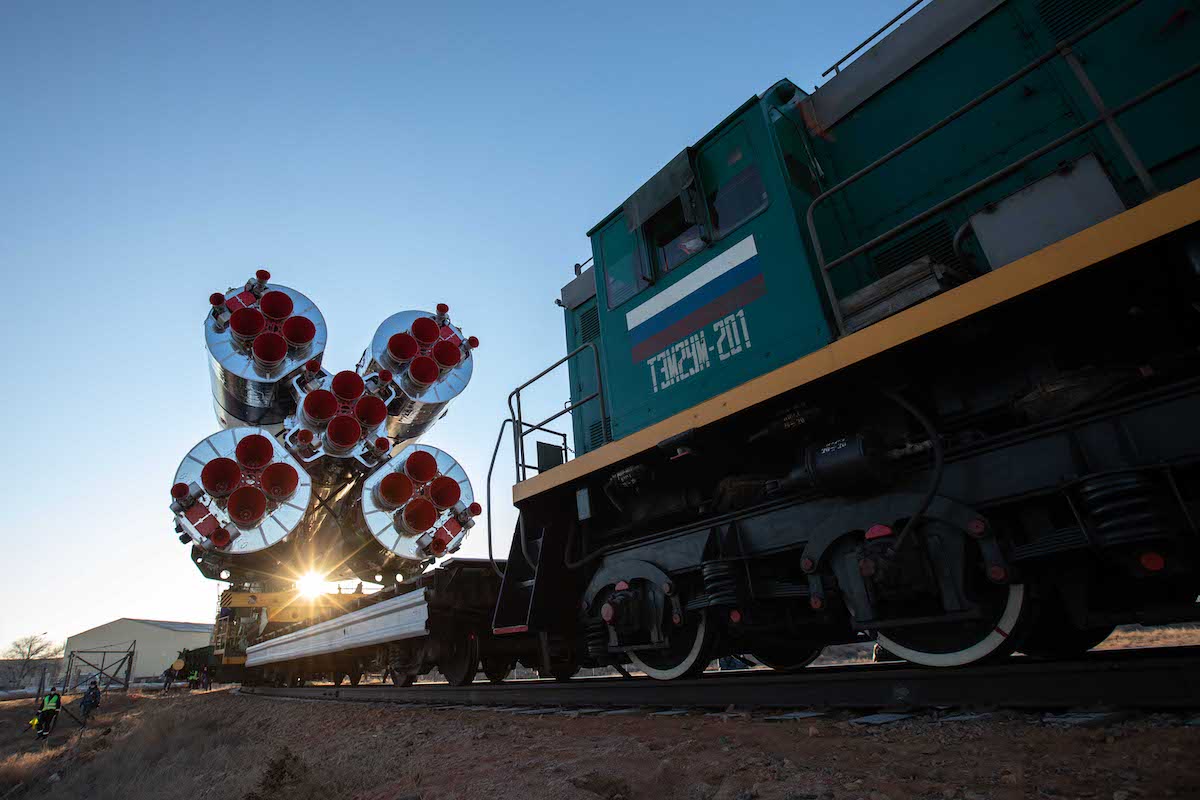
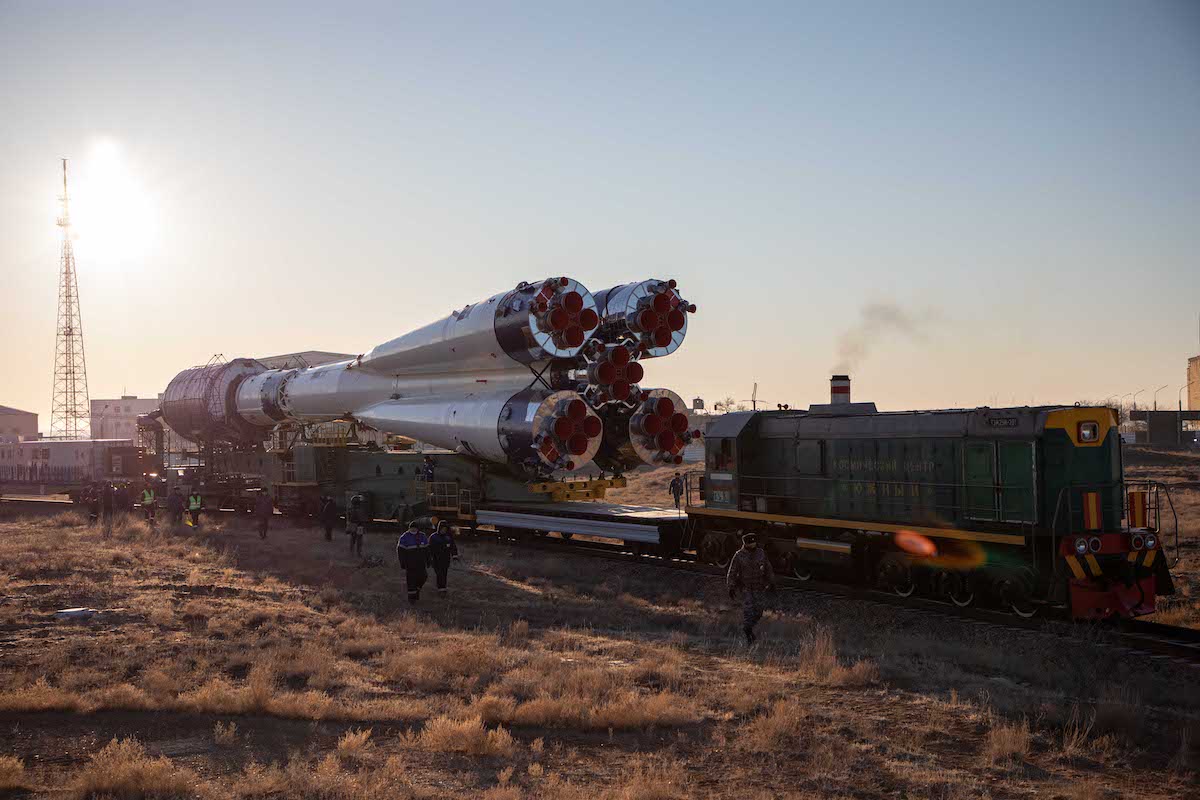
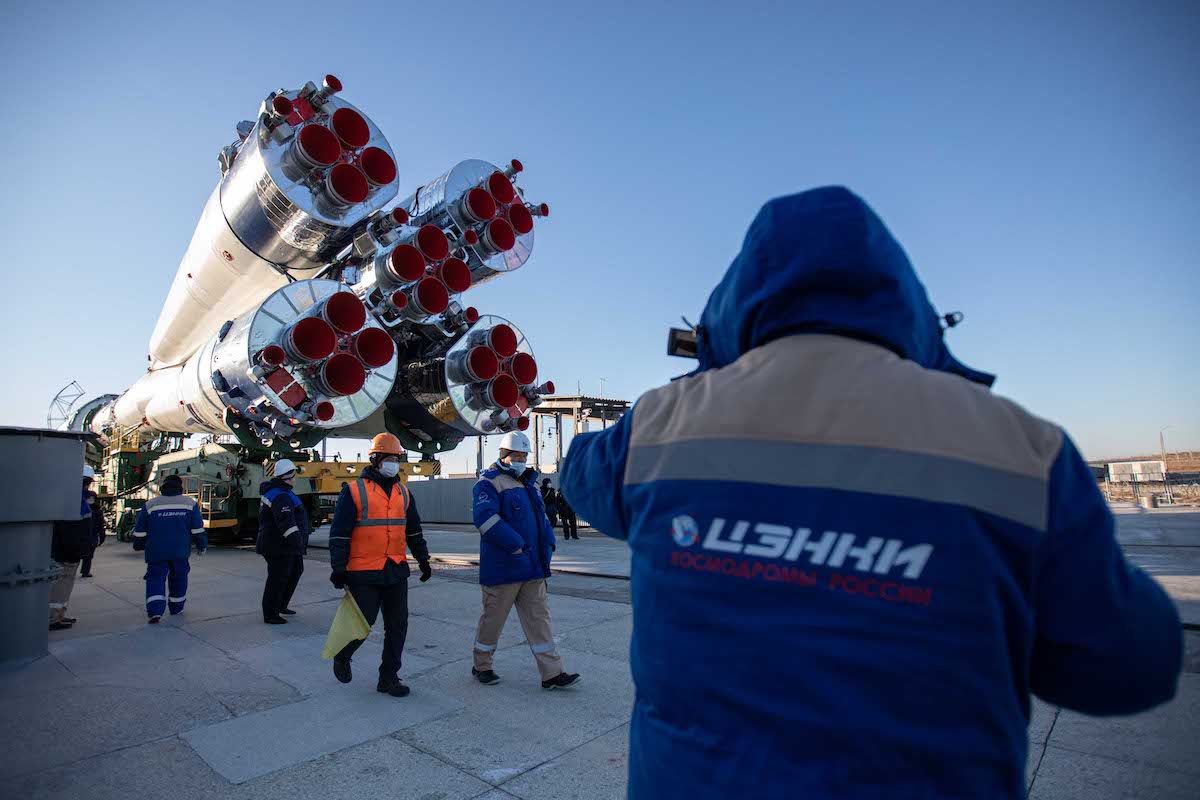
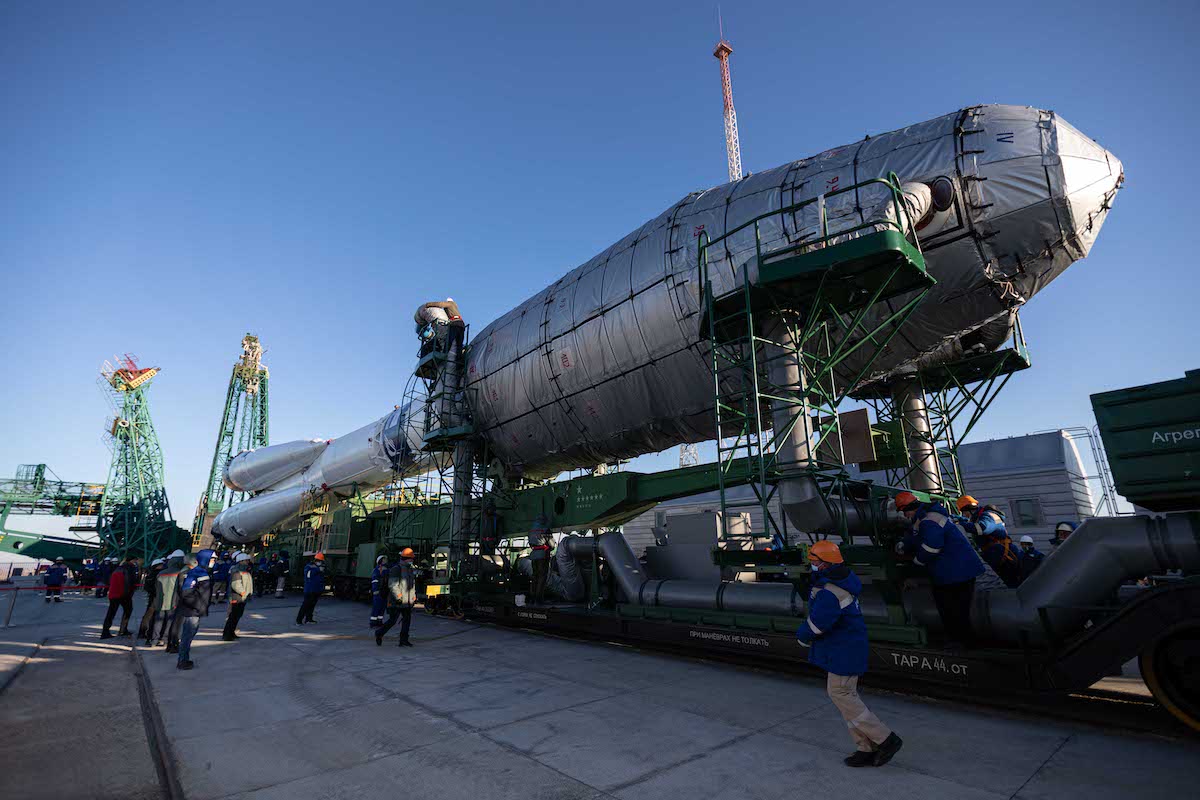
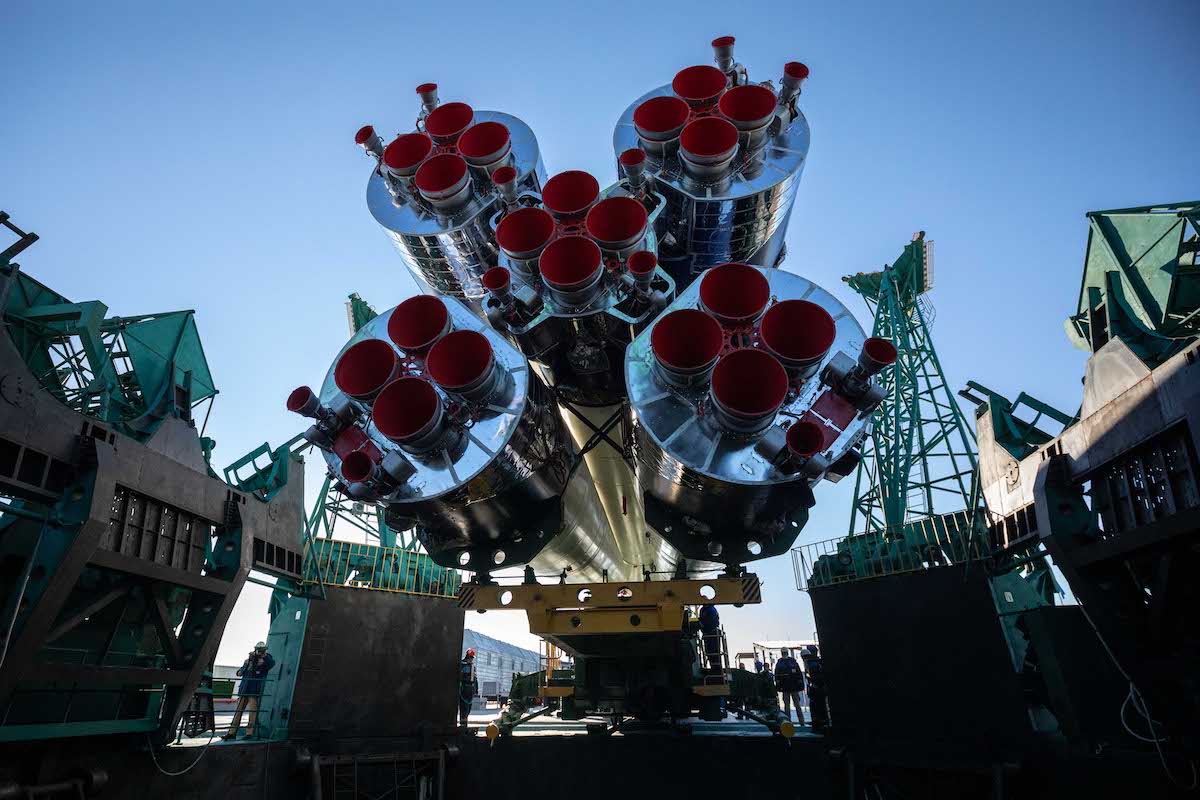
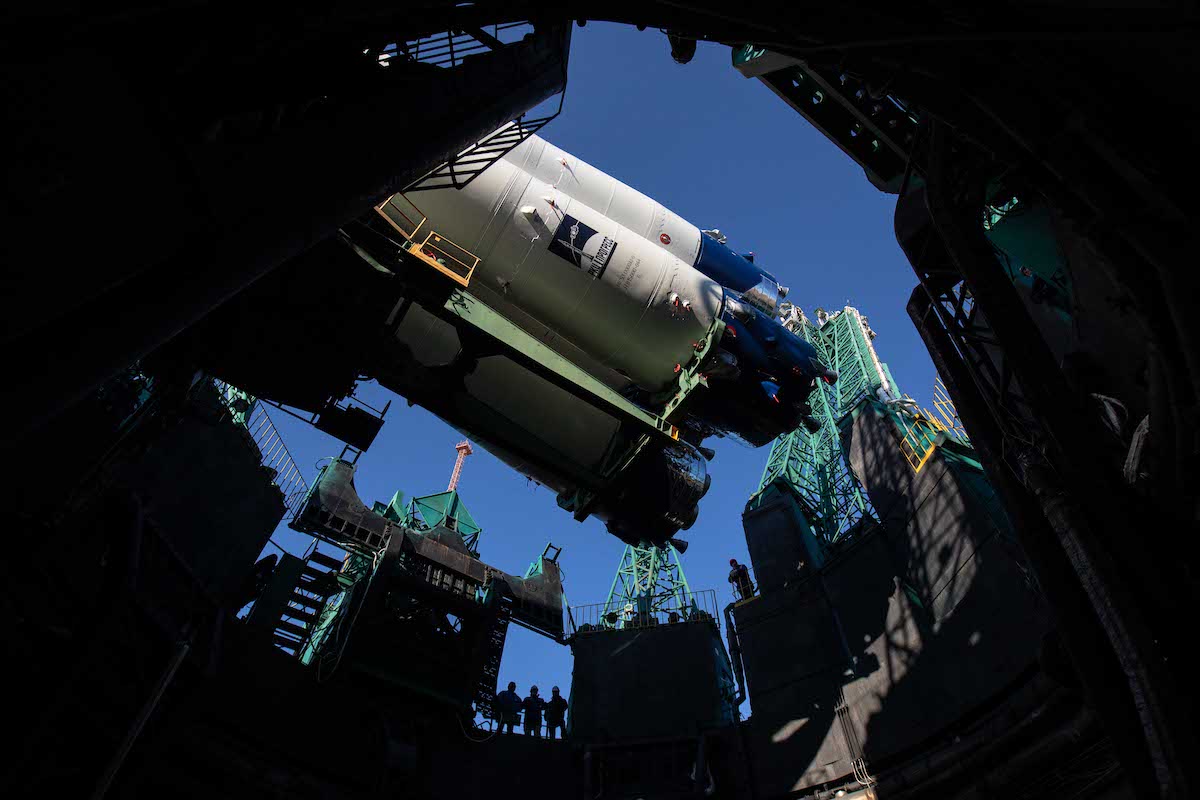
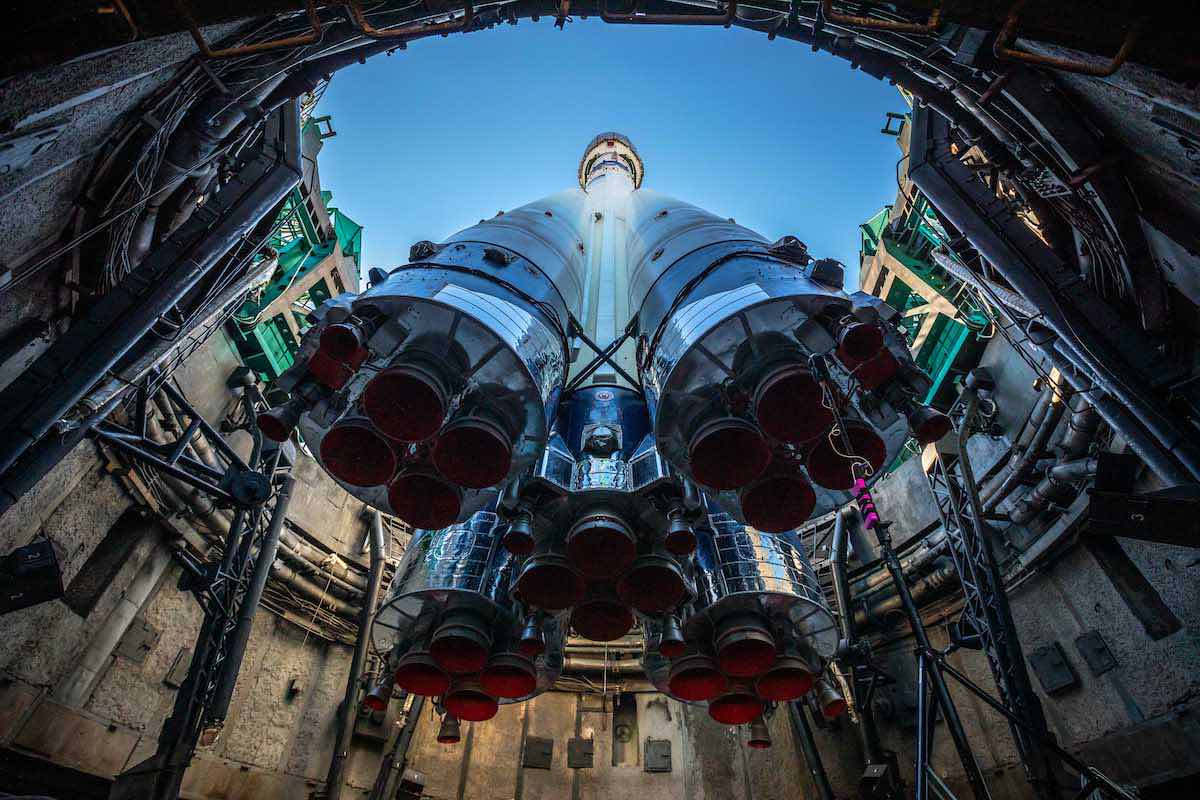
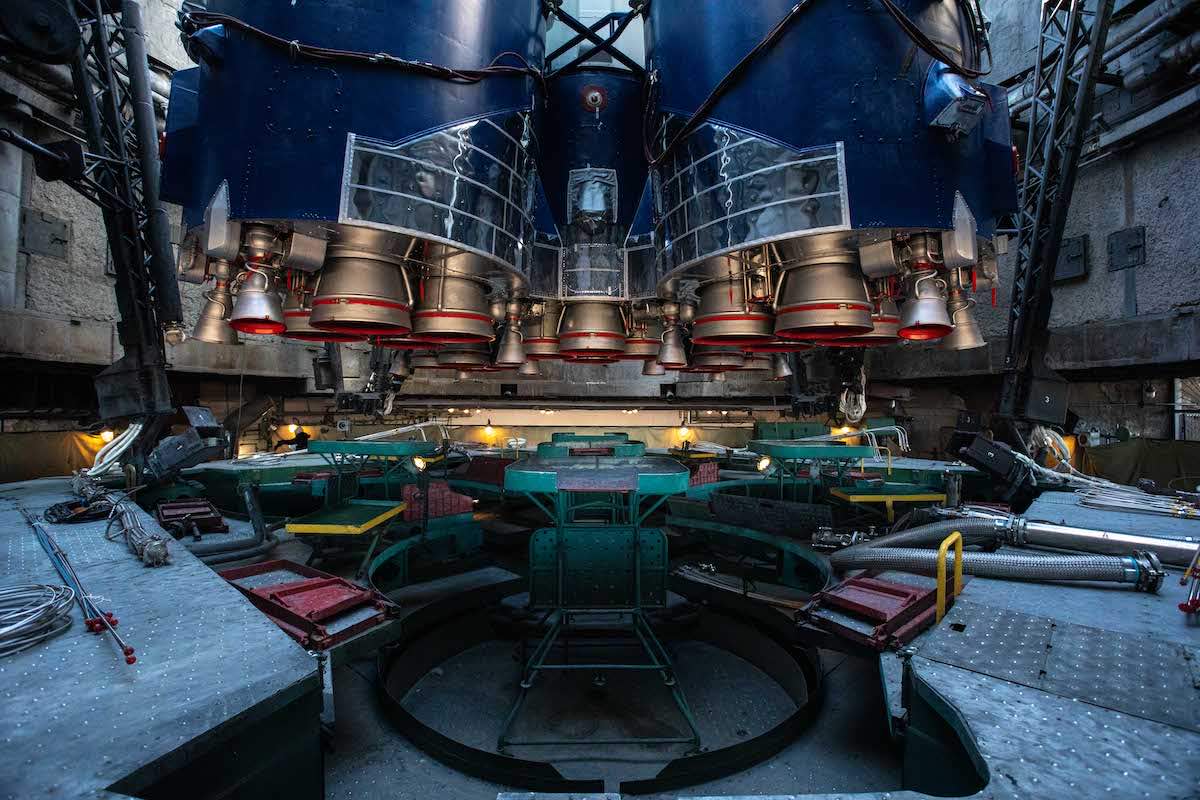
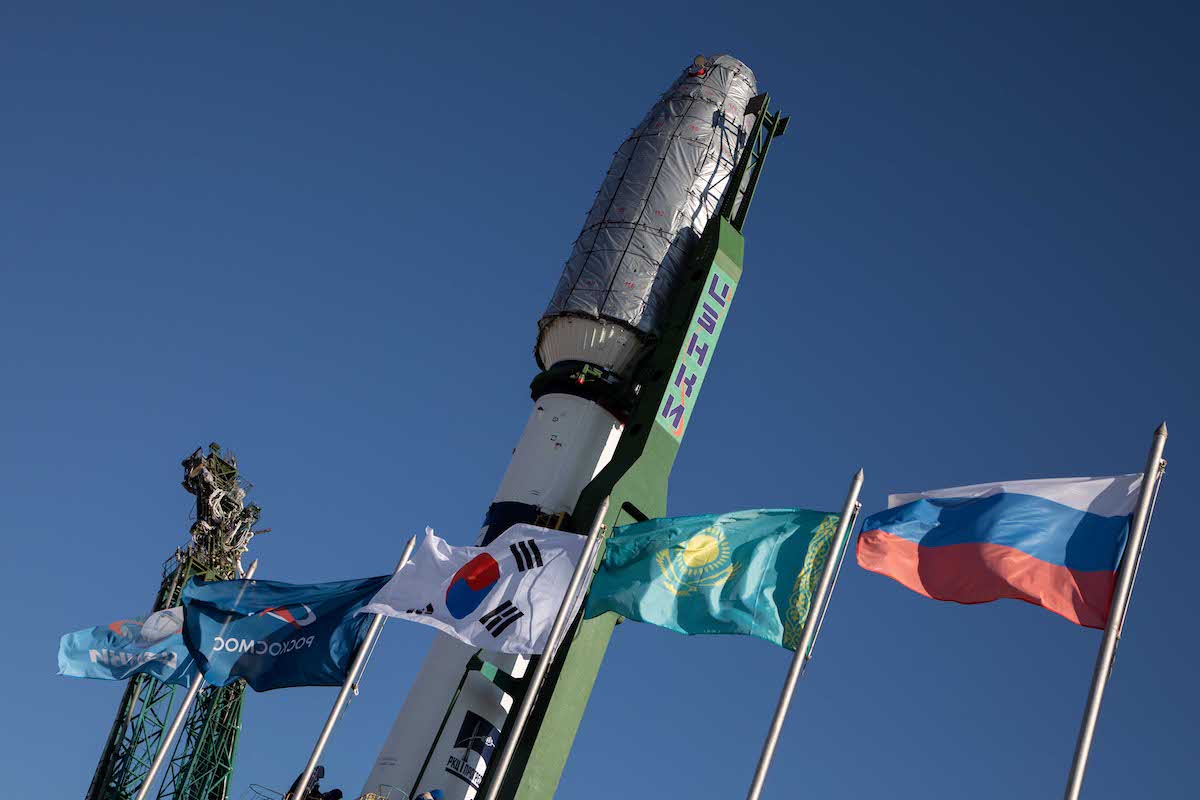
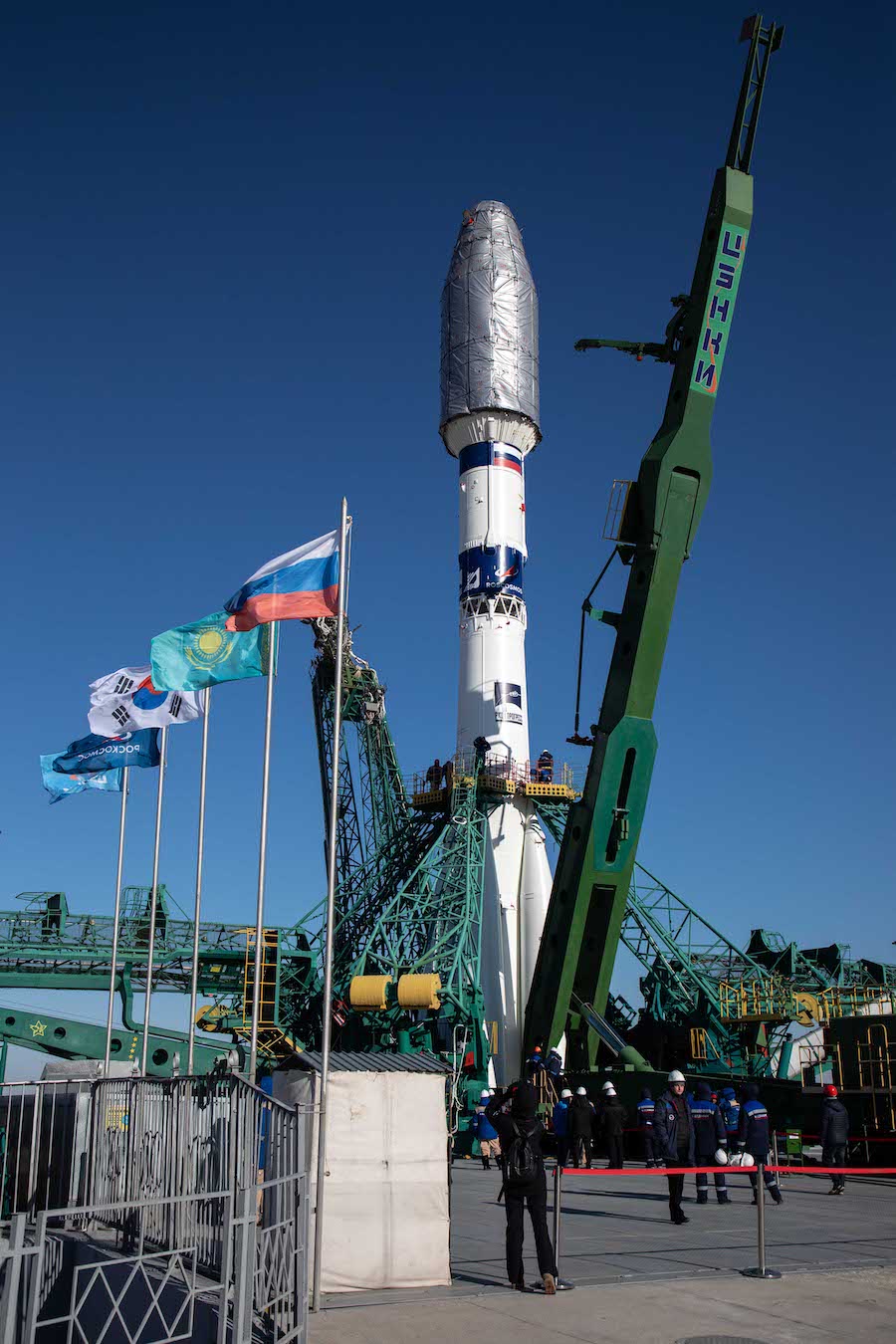
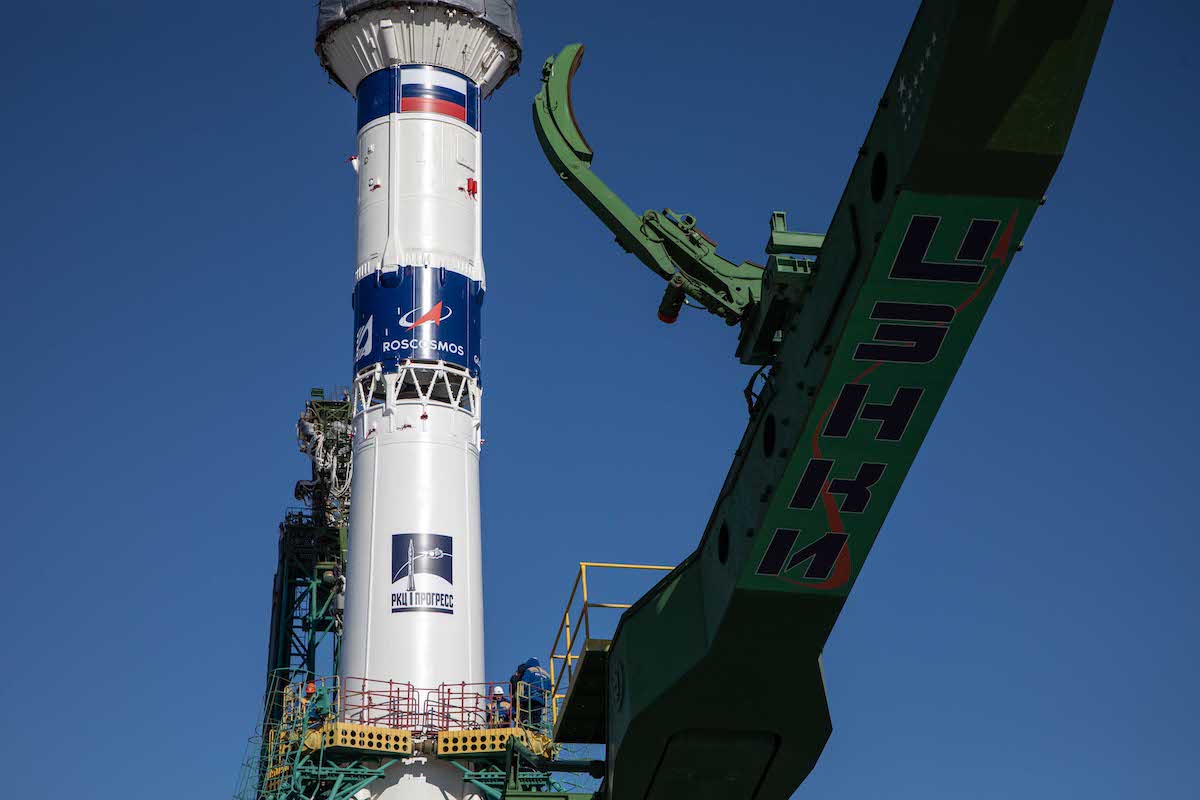
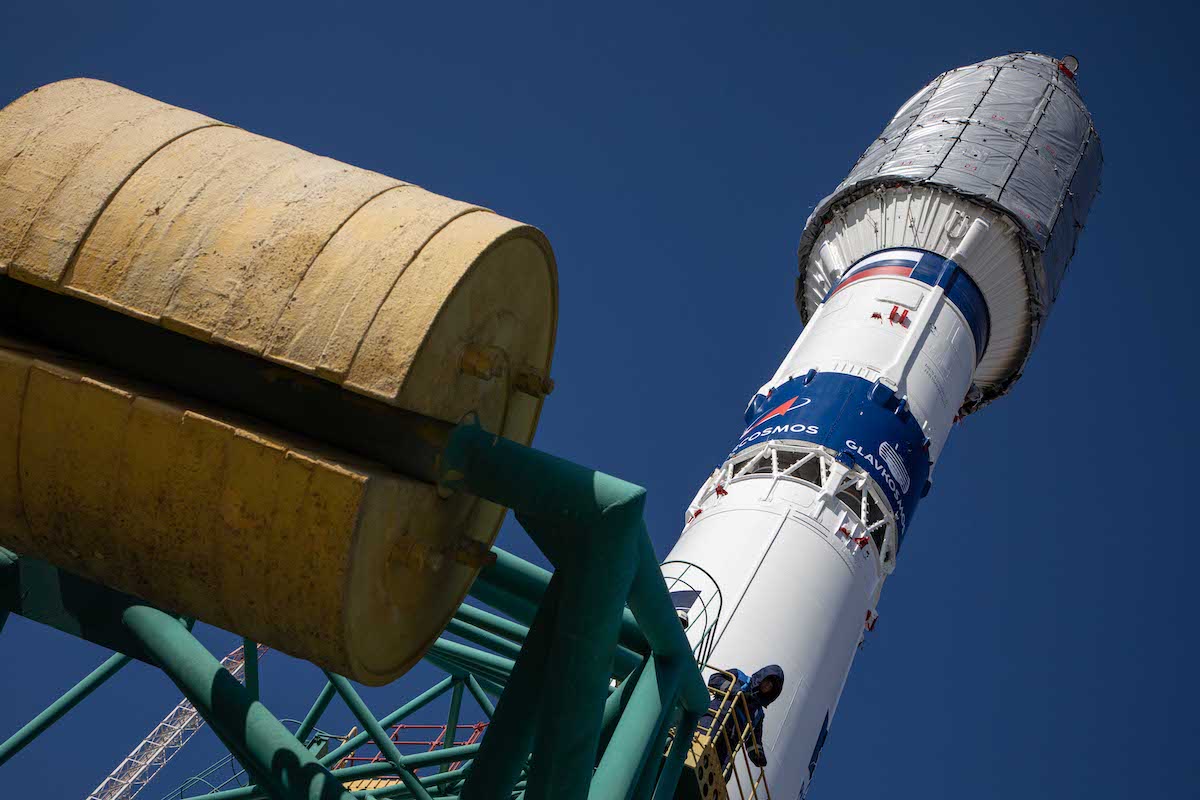
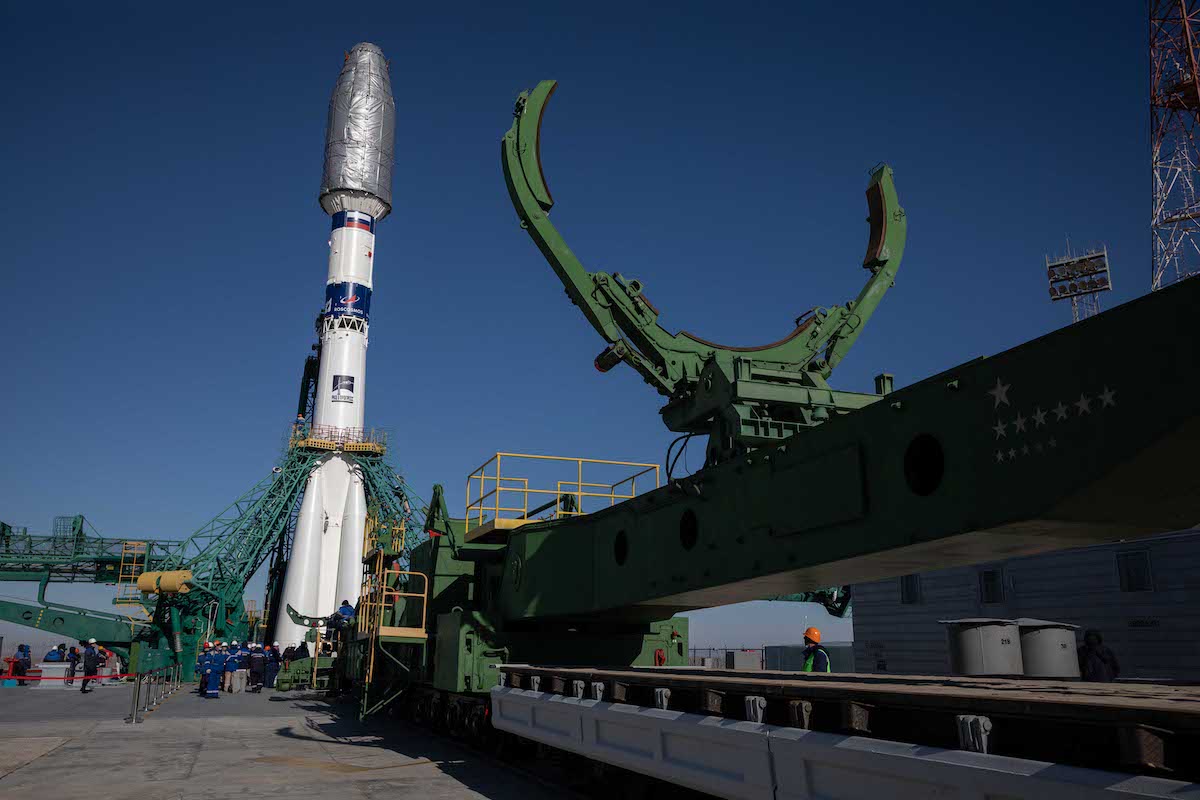
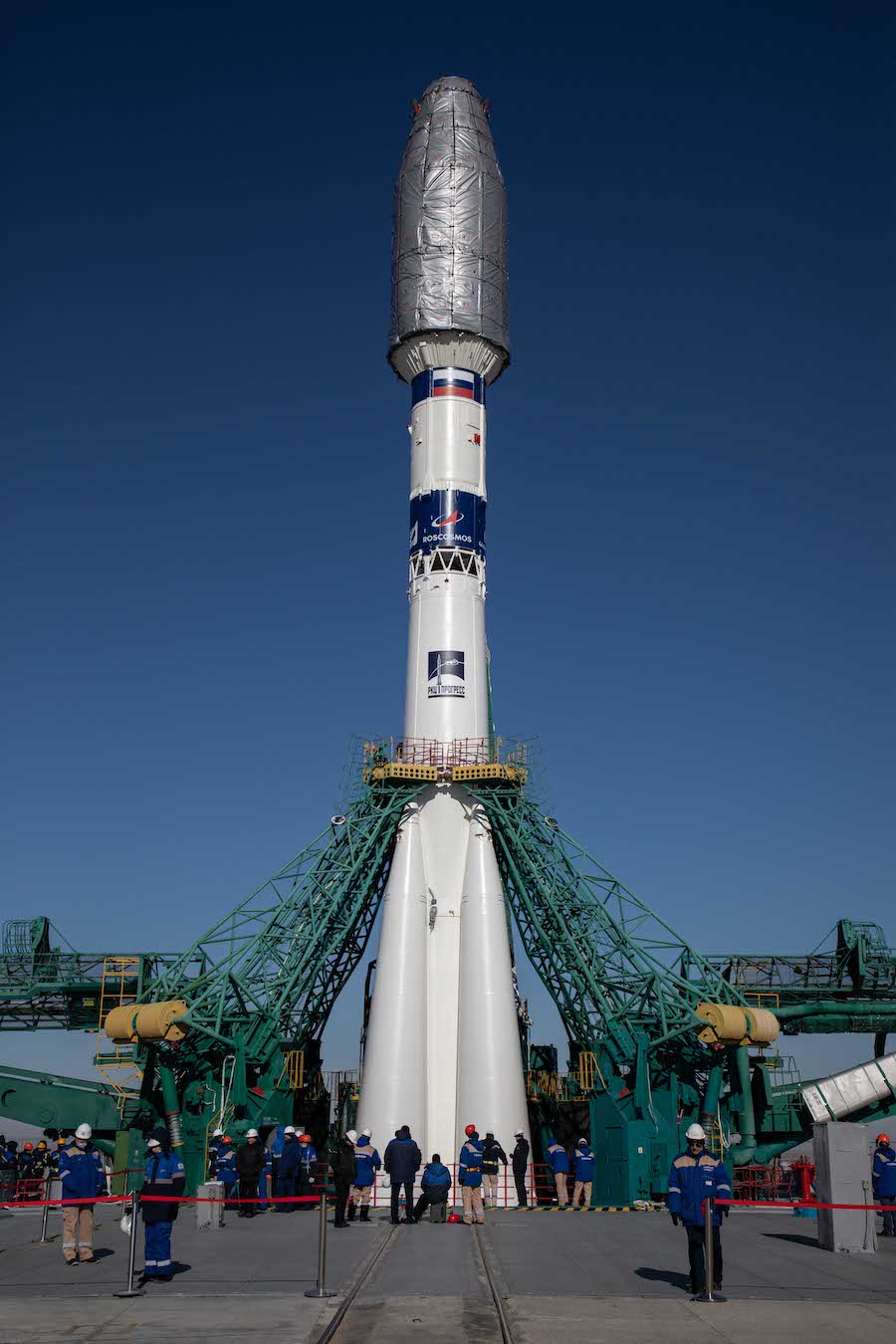
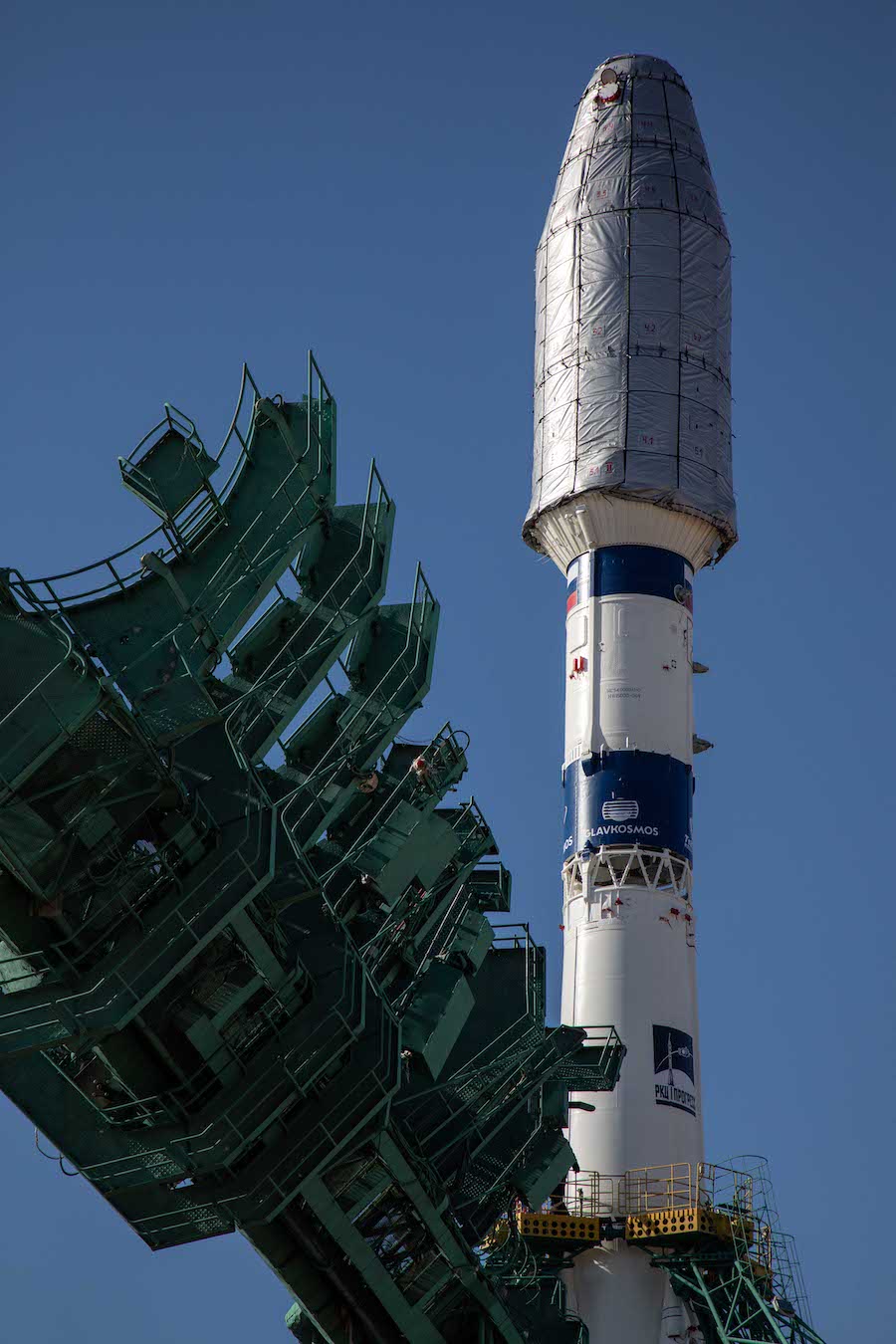
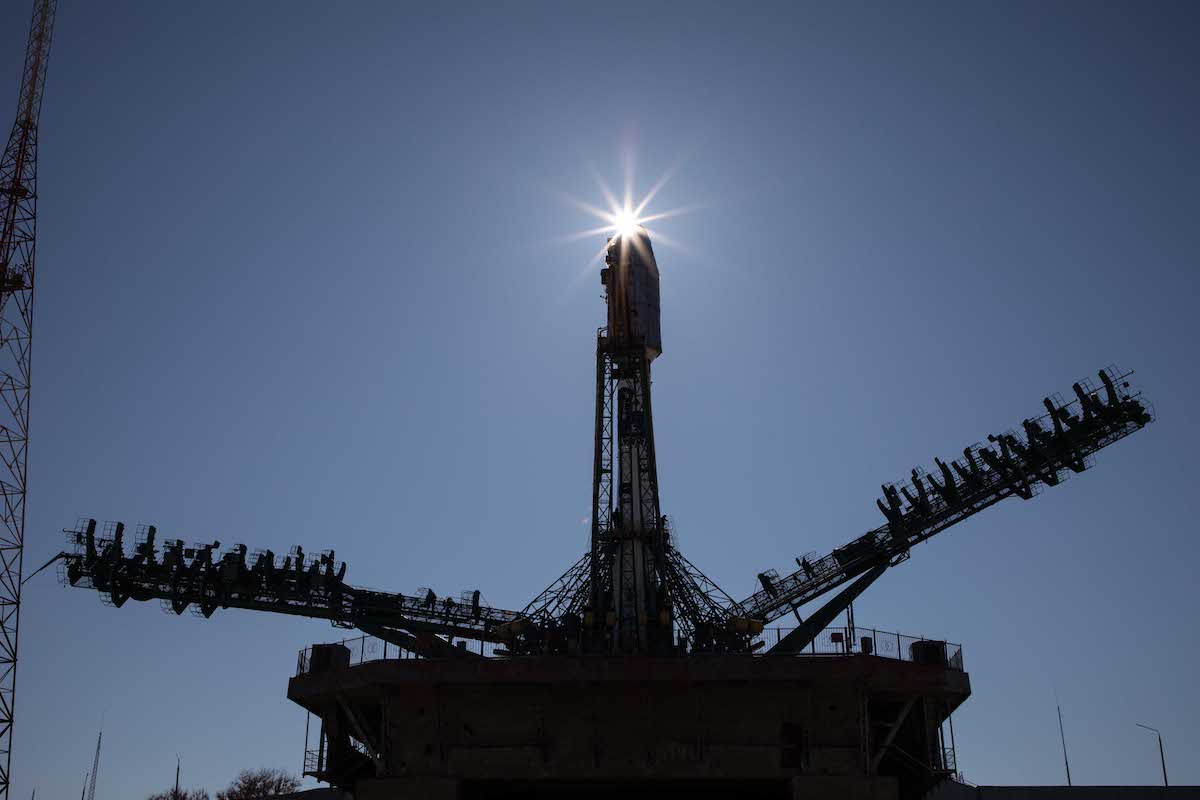
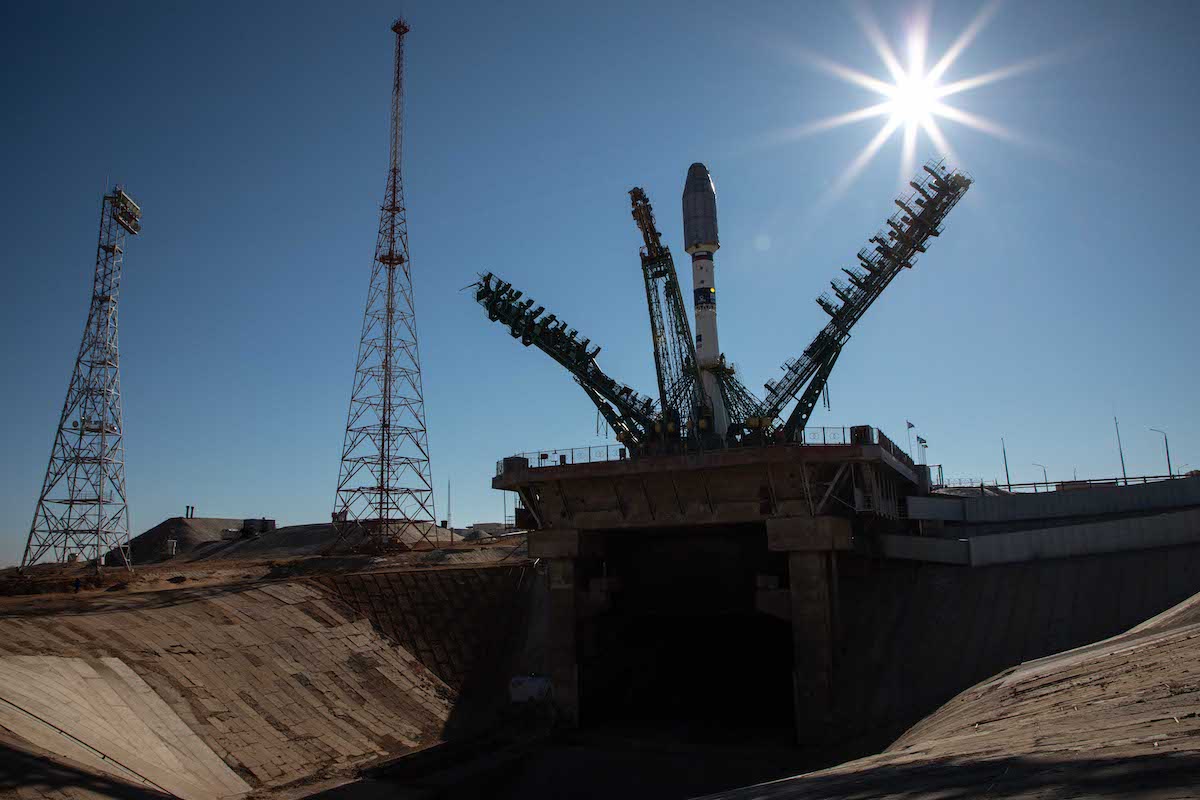
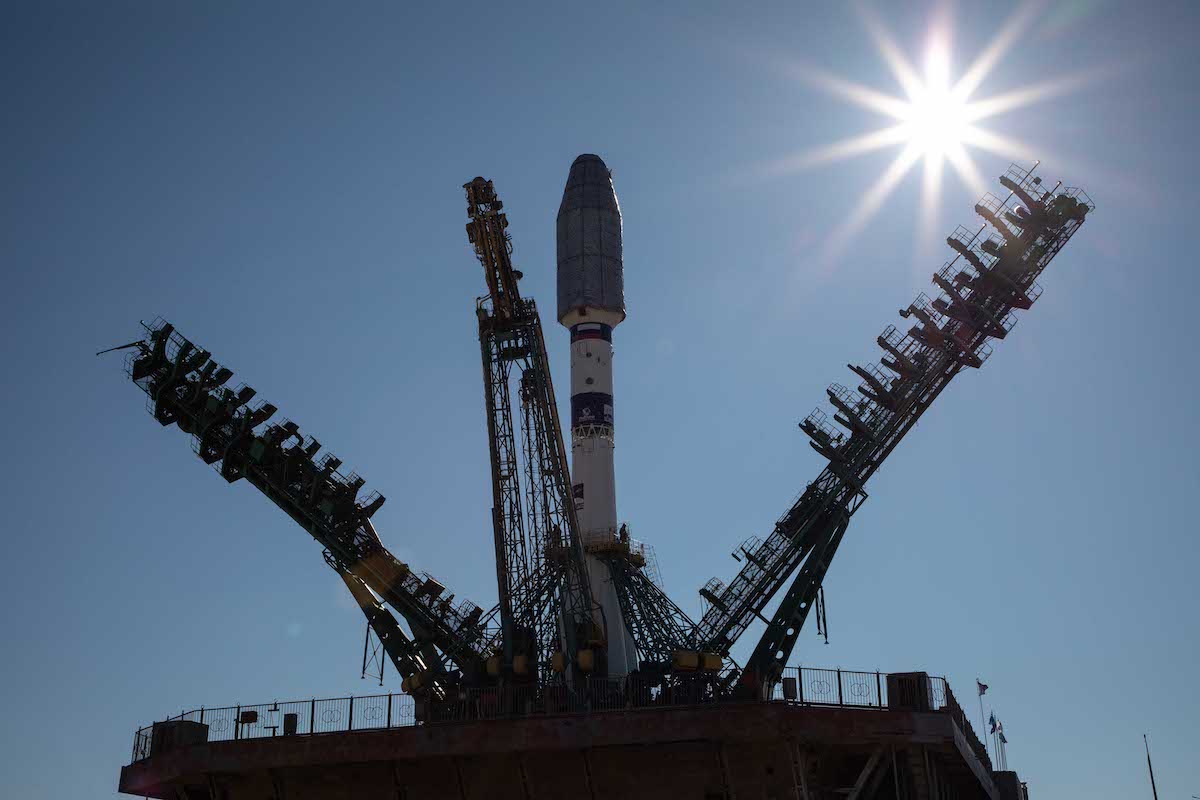
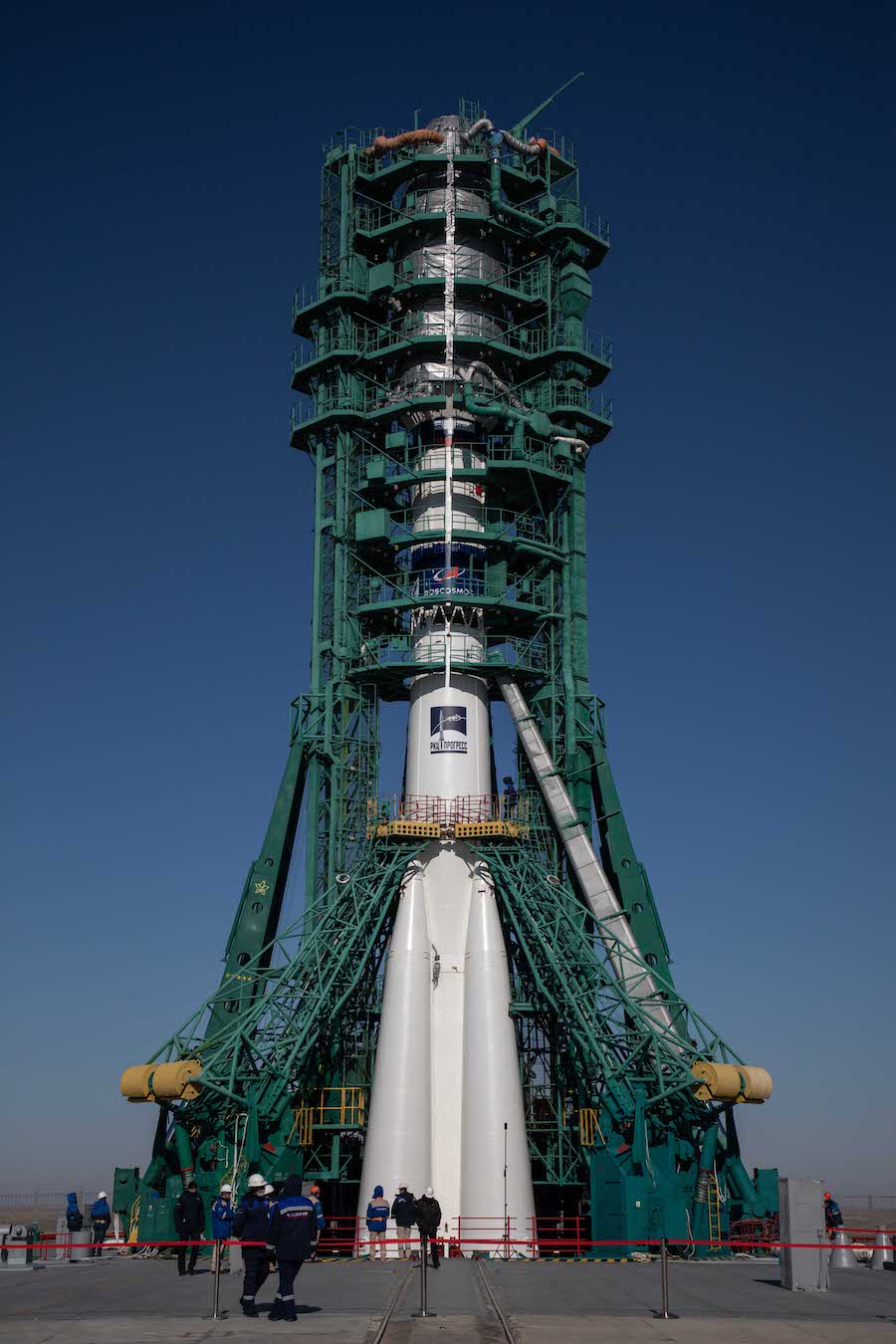
Email the author.
Follow Stephen Clark on Twitter: @StephenClark1.


